Sometime soon Jay and I will post the full story from our time at MPG Ranch in Montana, but in the mean time we wanted to share this crazy story.
The second week of May we traveled to MPG Ranch to place 4 transmitters on curlews there. The plan had been to do 5, but one transmitter had been sent off to be refurbished and didn’t get back to us in time.
So we put on 4 transmitters and finished up at MPG. The next week we made a loop to the Pahsimeroi Valley in Idaho, the National Elk Refuge in Wyoming, and The Nature Conservancy’s Flat Ranch near Island Park, putting on 3 other transmitters (more on that later too!).
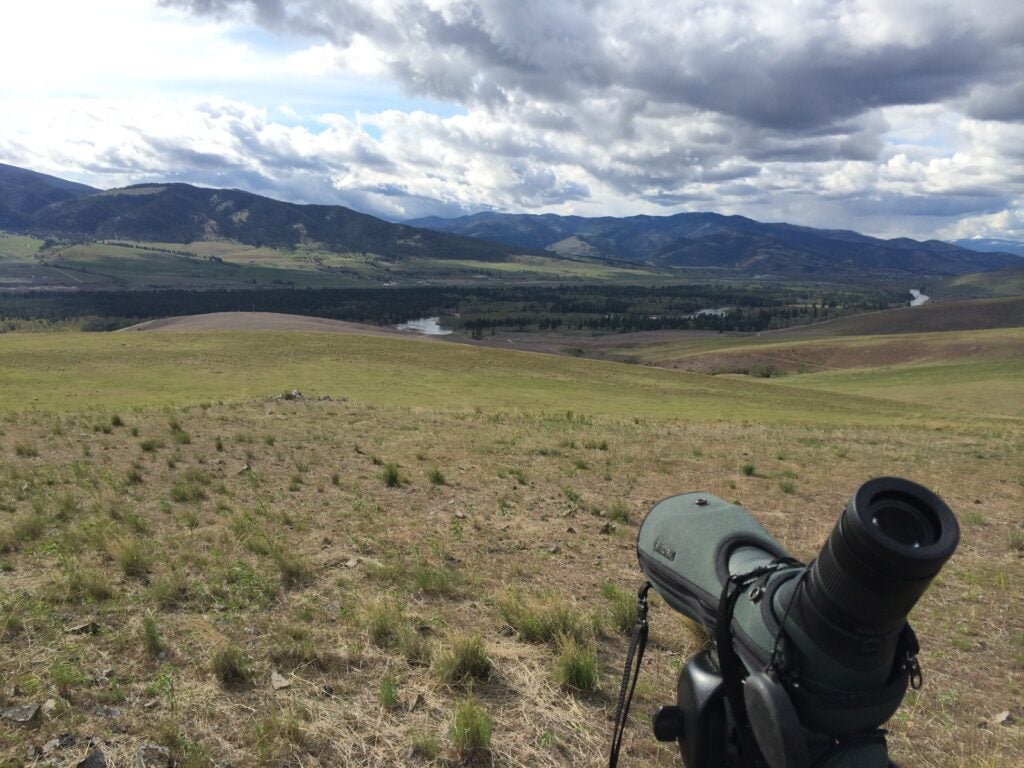
While we were traveling, we continued to get location uploads from our 4 MPG transmitters, and updates from the MPG biologists…things weren’t looking good. The last female we transmittered, who we nicknamed “The Beast” (she was really huge, and super feisty!) had stopped transmitting. The MPG folks were still seeing a bird on the nest during the day when females usually incubate, so we deduced that her transmitter must be malfunctioning. We decided that we should capture her and take her transmitter off.
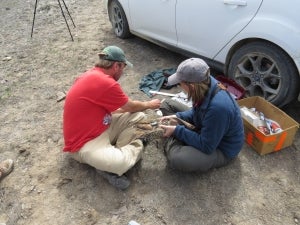
So Kate from MPG organized a trapping mission and headed out mid-day. They successfully trapped the incubating bird, but to their surprise it did not have a transmitter, band, or leg flag….they had caught the wrong bird! This was the MALE incubating during the day! (Male curlews are supposed to switch incubation with their mates in the evening and take the night shift). Things weren’t looking good for “The Beast”. If she was not on her nest during the day when she was supposed to be, it was very possible that she was dead (cause unknown but many predators in the area).

The MPG team watched the male over the next few days and never saw his mate. He diligently incubated the eggs during the day, only hopping off the nest for short stints to feed every few hours. With him doing double-duty we were worried that the nest wouldn’t make it. How could a male curlew raise the eggs on his own? Our only encouragement was that we knew the pair had started their nest about 3 weeks prior, so with an incubation period of about 28 days he didn’t have much longer to go….could he hold out another week until they hatched??
We were getting all this news during our travels and realizing we were going to have to change our plans. The 5th transmitter was shipped back to us and we had to make a decision…do we make the long run back up to MPG to put it on? We decided that with “Beast” likely dead, leaving only 3 transmitters remaining on MPG, we had to make a go for it. We left Island Park in the morning and made it up to MPG by dinner time. We tried in vain to find a new nest in order to transmitter a different bird.
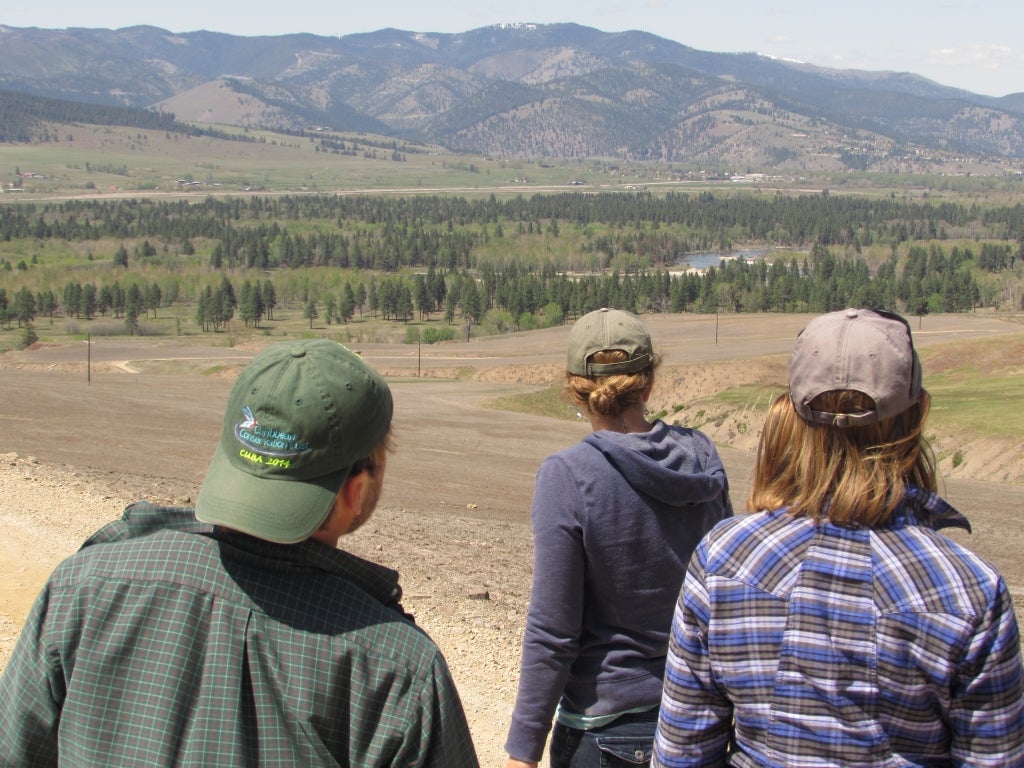
This lone male was our last resort since we were hesitant to add an extra 40 minutes of stress to what was already probably a pretty stressful spring for him. In the end, we decided to go for it – we’d catch him, and if he seemed too thin to handle the transmitter we’d just band him and let him go. We figured that if he was successful it would be really good to have location data on him to learn more about this odd single-parent behavior. As it turned out, his muscle condition seemed right and he weighed a healthy 486 grams so we went for it.
We attached the transmitter, wished him luck, and left for Boise. On our drive home the next day we were brainstorming names and texting with Kate the biologist. We were trying to think of a good name, maybe of a heroic character or a famous single dad. The first character that popped into both our minds was Atticus Finch. So we decided that’s what we had to call him: “Atticus”, after the heroic single father from the novel To Kill a Mockingbird.
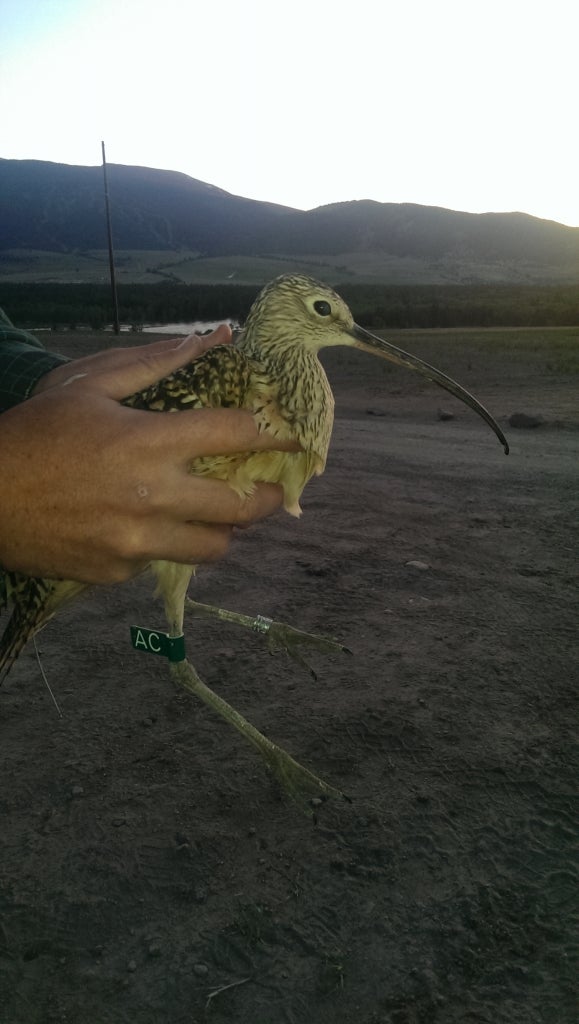
That was last week. And here’s where the story gets better. With a predicted hatch date any day (but possibly delayed if he wasn’t able to incubate as much as 2 parents could), we were anxiously awaiting news from the biologists at MPG. Finally, on Wednesday we heard the news we’d been waiting for. Debbie of MPG Ranch checked on Atticus and found that the eggs had hatched. He was now the proud parent of three fuzzy chicks!
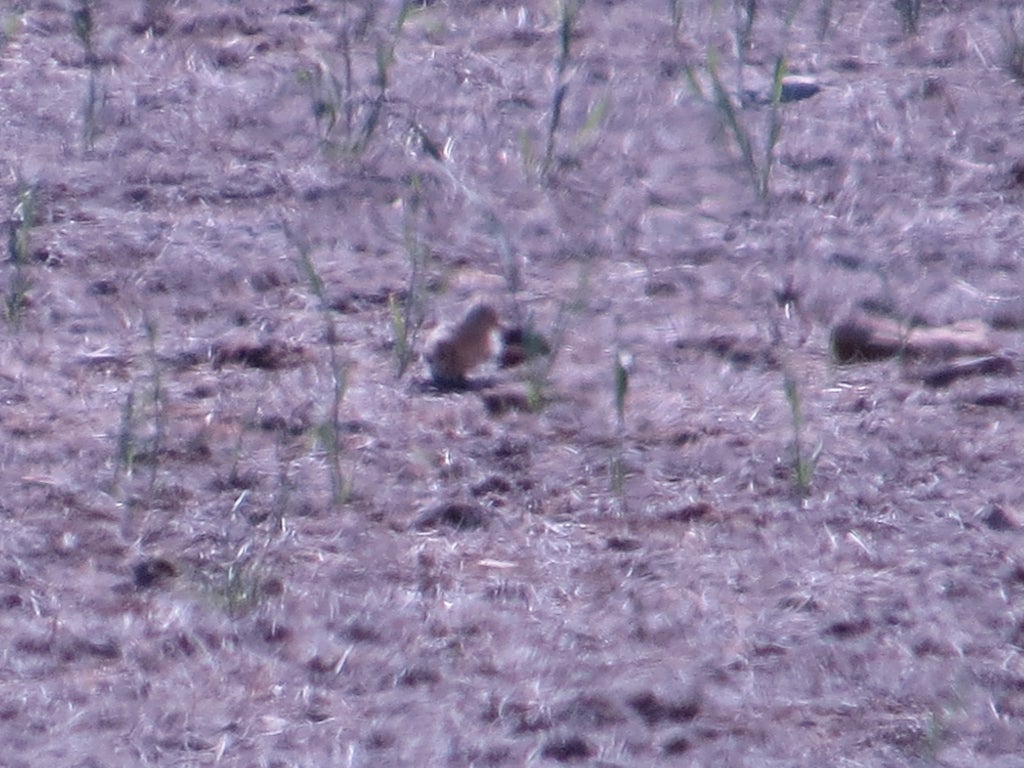
We didn’t want to disturb them by getting too close. Photo by Debbie Leick
With the hard incubation work over, we hope that Atticus can successfully raise the chicks on his own. We’re sure he’s very happy to have mobile babies that can feed right alongside him, instead of fragile eggs to tend to. That said, let’s cross our fingers that the chicks find good cover and can survive to fledging … go Atticus!